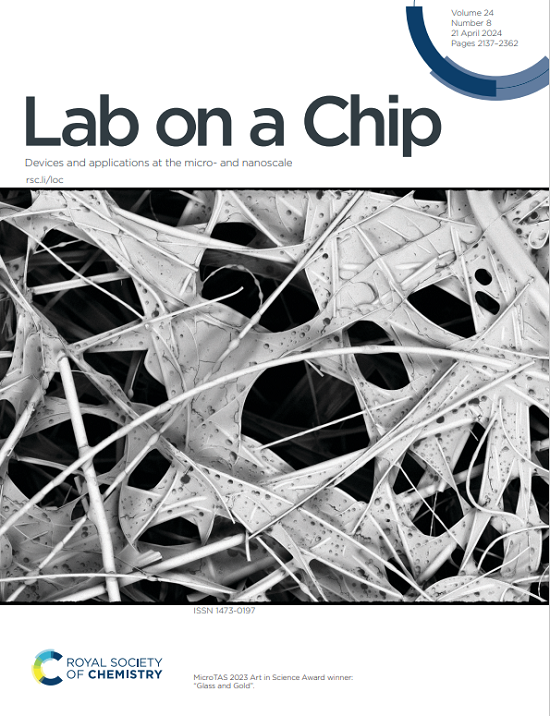利用皮壳细胞与报告细胞共培养筛选抗体分泌细胞的功能
IF 6.1
2区 工程技术
Q1 BIOCHEMICAL RESEARCH METHODS
引用次数: 0
摘要
单克隆抗体(mab)是一类不断发展的治疗药物,以其高特异性和多种功能机制而闻名,包括激动作用和拮抗作用。尽管微孔阵列技术和微滴微流体技术被用于配对抗体分泌细胞(ASCs)和靶细胞,以发现治疗性单抗,但现有方法的吞吐量有限或功能评估不足。为了解决这些局限性,我们使用了PicoShells,一种中空介质渗透性水凝胶微粒,通过杂交瘤与报告细胞共培养24小时来评估单抗的功能。利用这一工作流程,我们鉴定了杂交瘤分泌的抗体,这些抗体可以调节共包被报告细胞中活化T细胞核因子(NFAT)的表达。picoshell的高通量荧光激活细胞分选(FACS)鉴定出活性克隆,对这些活性克隆进行分选、扩增和选择后验证,显示出79.4%的T细胞活化,功能克隆比起始的尖刺群体富集5.2倍。该方法将功能评估与可扩展处理相结合,为筛选抗体库和加速治疗发现提供了强大的解决方案。本文章由计算机程序翻译,如有差异,请以英文原文为准。
Functional Screening of Antibody-Secreting Cells by Co-Culture with Reporter T Cells Using PicoShells
Monoclonal antibodies (mAbs) are a growing class of therapeutics known for their high specificity and diverse functional mechanisms, including agonism and antagonism. Although microwell array technologies and droplet microfluidics are employed to pair antibody-secreting cells (ASCs) with target cells for therapeutic mAb discovery, existing methods suffer from limited throughput or inadequate functional assessment. To address these limitations, we applied PicoShells, hollow media-permeable hydrogel microparticles, to evaluate mAb function by co-culturing assay of hybridomas with reporter cells for 24 hours. Using this workflow, we identified hybridomas secreting antibodies that modulate the expression of nuclear factor of activated T cells (NFAT) in co-encapsulated reporter cells. High-throughput fluorescence activated cell sorting (FACS) of PicoShells containing cells from a spiked population identified active clones, which were sorted, expanded, and validated post-selection, demonstrating 79.4% T cell activation, a 5.2-fold enrichment in functional clones over the starting spiked population. This approach integrates functional assessment with scalable processing, offering a robust solution for screening antibody libraries and accelerating therapeutic discovery.
求助全文
通过发布文献求助,成功后即可免费获取论文全文。
去求助
来源期刊

Lab on a Chip
工程技术-化学综合
CiteScore
11.10
自引率
8.20%
发文量
434
审稿时长
2.6 months
期刊介绍:
Lab on a Chip is the premiere journal that publishes cutting-edge research in the field of miniaturization. By their very nature, microfluidic/nanofluidic/miniaturized systems are at the intersection of disciplines, spanning fundamental research to high-end application, which is reflected by the broad readership of the journal. Lab on a Chip publishes two types of papers on original research: full-length research papers and communications. Papers should demonstrate innovations, which can come from technical advancements or applications addressing pressing needs in globally important areas. The journal also publishes Comments, Reviews, and Perspectives.
 求助内容:
求助内容: 应助结果提醒方式:
应助结果提醒方式:


